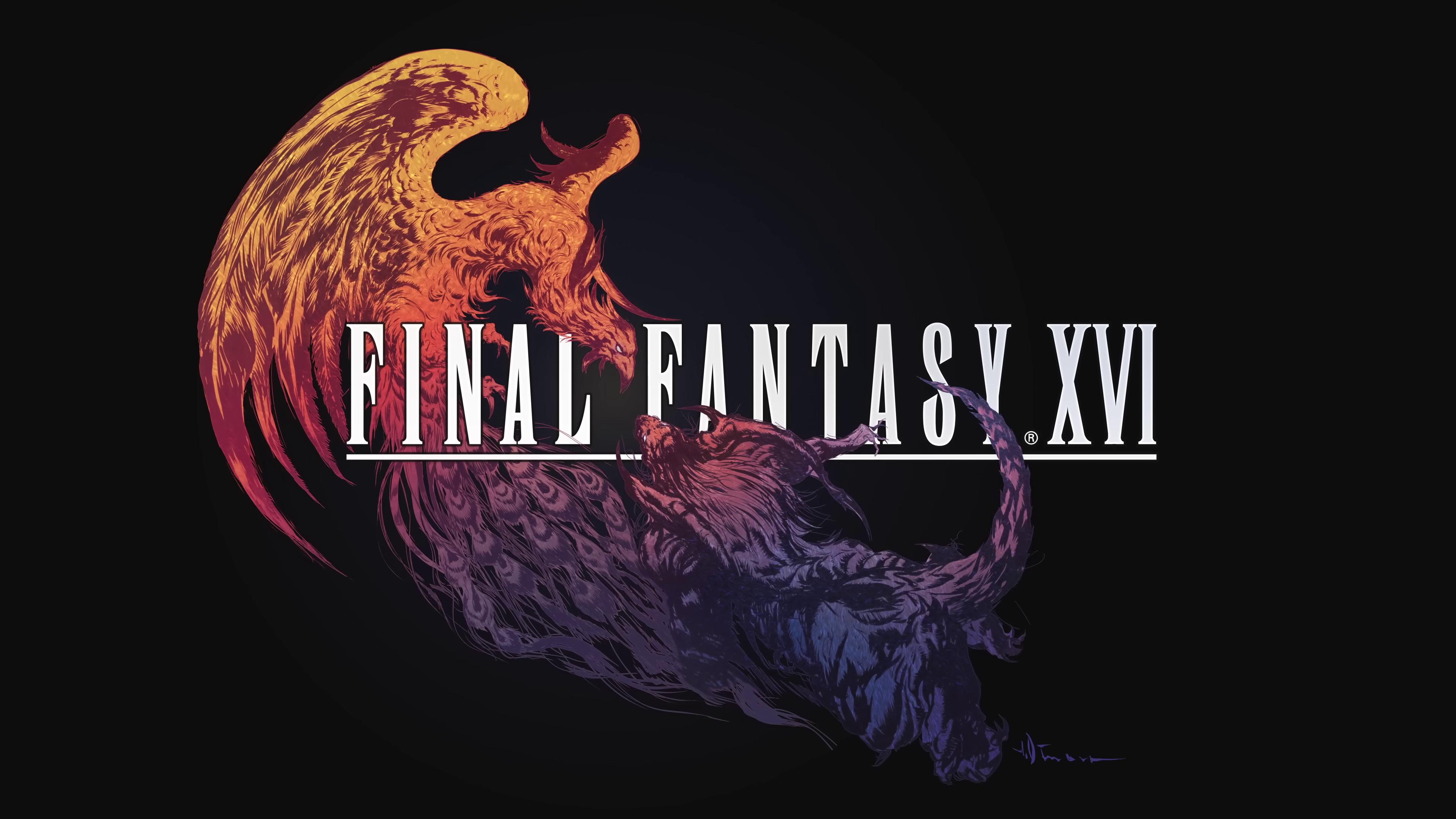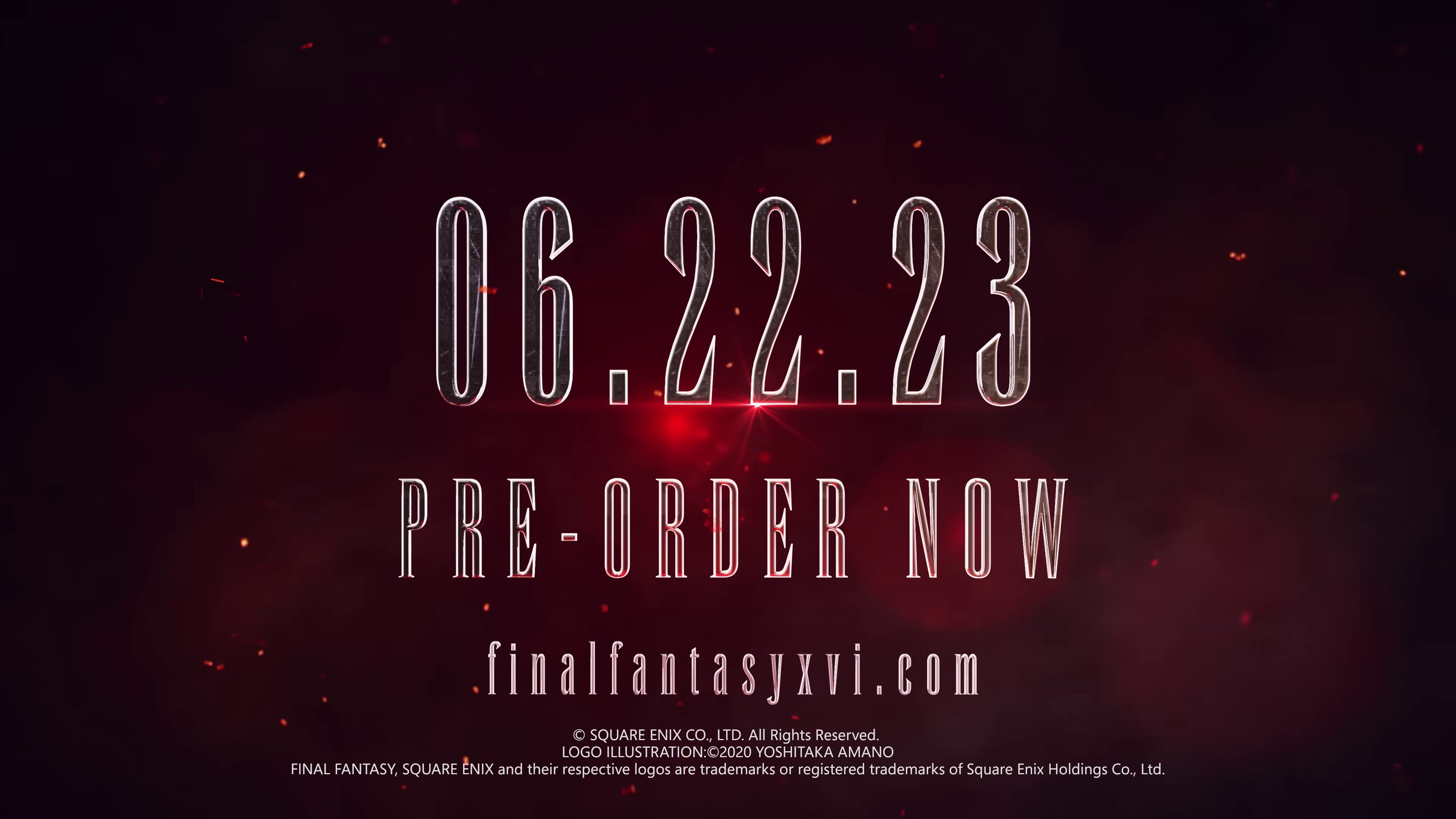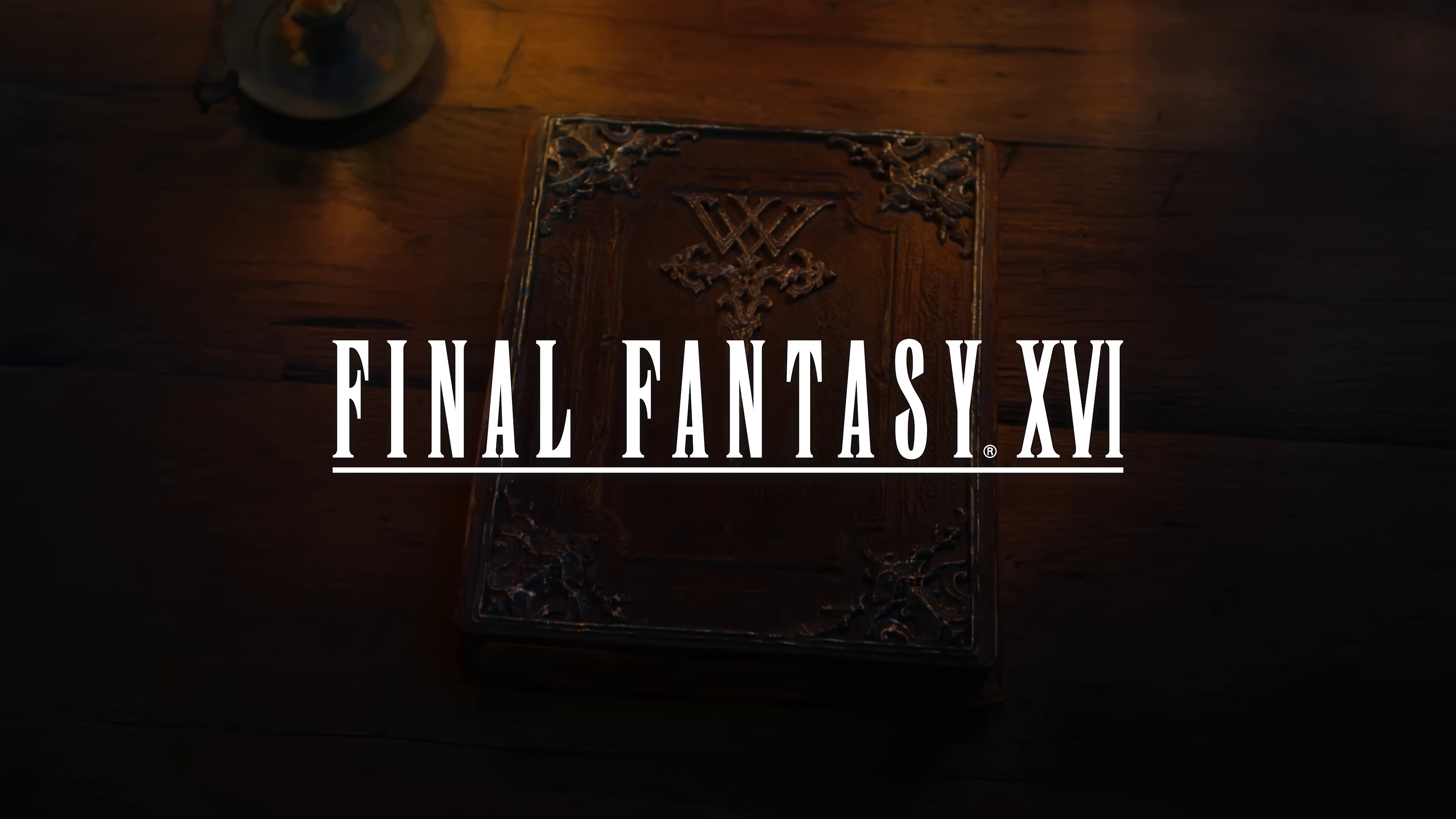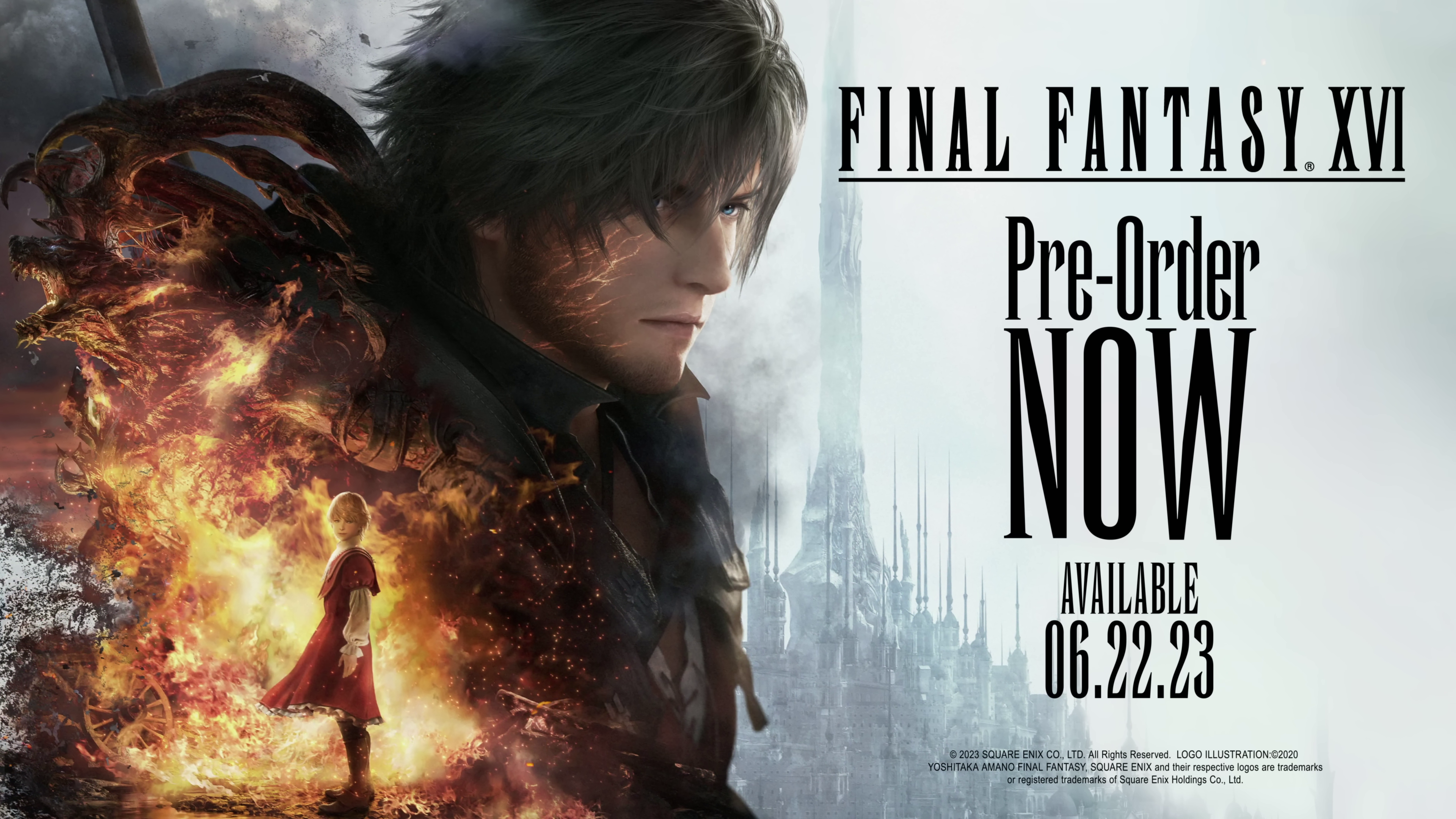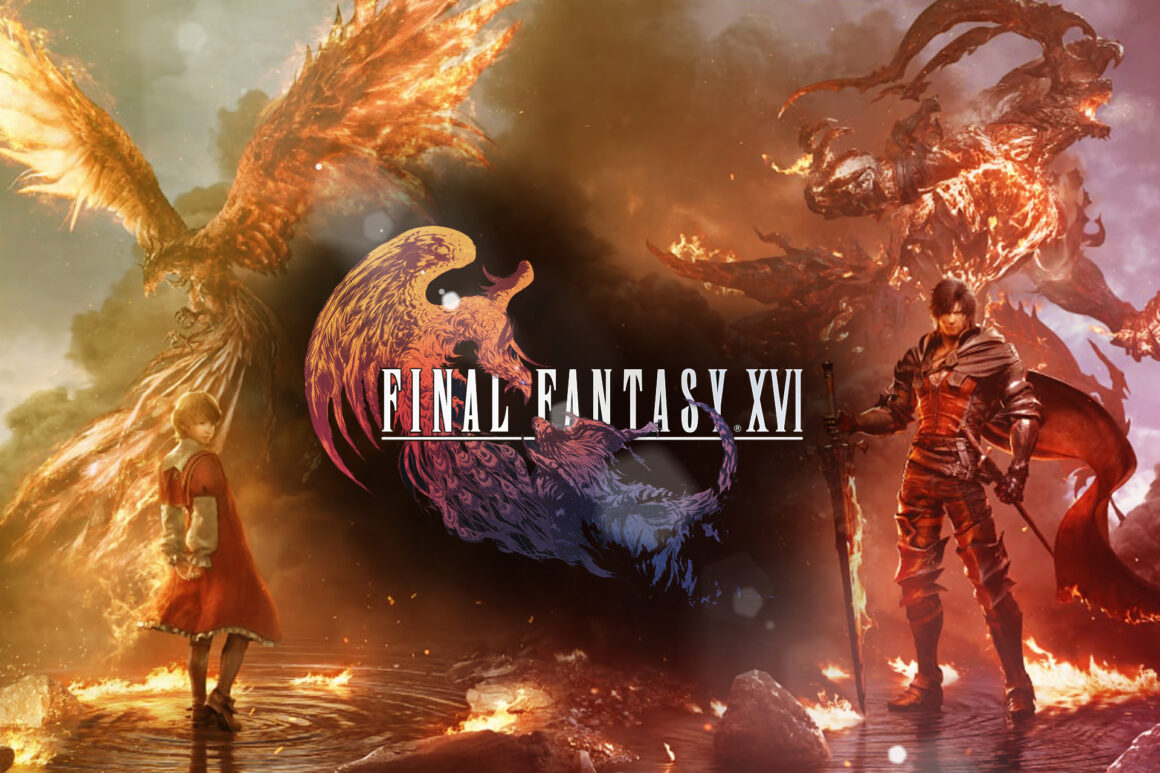
Firey FFXVI
HO…LY… SHIT. That’s the first thing I have to say. I just finished Final Fantasy XVI and I’m all over the place with my thoughts, emotions, and just complete disbelief. Disbelief at what an experience I had with this one. Before I traverse my feelings about this game with you all, here are some quick background facts:
First, XVI = 16 in case you were wondering, so yes, we’ve reached the 16th game in the main Final Fantasy series. FFXVI was released exclusively for PlayStation 5 on June 22nd worldwide. Long gone are the days where these games would release in Japan first and later be adapted in other regions. In fact, I’ve come to learn that FFXVI’s English language track was the original audio the game was developed and synchronized with, where else the Japanese version is the dub. How crazy is that?! Much respect to Square-Enix for learning a valuable lesson that a lot of overseas entertainment content producers realize: go where the money is. I’m looking at you Toei Animation. International audiences, consisting of people like me, are looking away from boring western content and towards whatever is different and unique. Enter the eastern part of the world where Anime, dramas, films, and games are inherently different and appealing to us. To the companies the realize this and make efforts to market to us in English, I salute you!
That tangent aside, this game has been in development for the last 8 years and to date is the most ‘different’ Final Fantasy ever. The turn-based battle system is a thing of the past (which we’ve observed since Final Fantasy XV) and playing through a multiple array of characters is also dead in the mud (a drastic change from Final Fantasy VII Remake and before). Mini-maps, spells, MP (magic points), and endless level-grinding are also some typical FF facets the have disappeared as well. So, what’s left, you ask? Well, there are familiar fiends/monsters, summoned monsters, hunts, equipment, battle elements, and story pieces that are purely Final Fantasy-like. But, if you haven’t seen any trailers, read much, or played the demo of this game, then be prepared for a completely new experience. We had already seen some of this in FFXV, but with this being the first core game made for the new generation of systems, there’s just so much more to take in now.
Alright, so what is this game actually about? Final Fantasy XVI tells the story of a world known as Valisthea, where magic is used to enhance everyday life for the humans that live there. There are various Kingdoms that take up residence around giant crystals known as Mothercrystals, the providers of magic and great divine power. Our main character, Clive Rosfield, is the son of King Elwin, ruler of Rosaria. From an early age, he is tasked with being a shield to his younger brother Joshua. Joshua is a Dominant, a human that possesses the power of an Eikon (summoned monsters). Specifically, Joshua houses the Phoenix, one of seven total known Eikons. There are some familiar creatures amongst the Eikons in XVI, like Shiva and Bahamut, but there are also some rarer appearances like Titan (exactly like the ones from Attack on Titan). Each of the Eikons represents a specific magical element, such as Phoenix with Fire and Shiva with Blizzard. Dominants are either highly protected or highly sought after, as varying regions use them to fight wars and defend lands. When tragedy and betrayal strike in the Rosarian royal family, King Elwin is assassinated in front of Joshua, who was merely a child at the time. His emotions send him berserk, turning him into the Phoenix for the first time. Clive shows up too late, having failed to be an adequate shield to both his brother and father. He watches as Joshua struggles to control the power of the Phoenix, and in pure worry and heartache, he tries to rescue his brother from his Eikon fury. In that moment, something unfounded happens; Clive awakens as a second Fire Eikon, Ifrit. Ifrit faces off in a fiery blaze with Phoenix, resulting in an explosive fight to the death. In a sad twist of faith, with both brothers unable to fully control their powerful transformations, one of them dies. Clive, many years later, has repressed the memory of turning into Ifrit and having been the one who killed his younger brother Joshua. The Kingdom of Rosaria has long since fallen and the world has moved on. But this is not the end of the story. In fact, it was just the beginning. For Clive, there are many secrets to unfold, truths to discover, battles to be had, and friends to be made. Where did Ifrit come from and how will his appearance change everything in Valisthea?
Have I grabbed your attention? Facts aside, I’m here to provide my review and share what my journey was like with FFXVI. Spoilers galore lie ahead, so beware and enjoy!
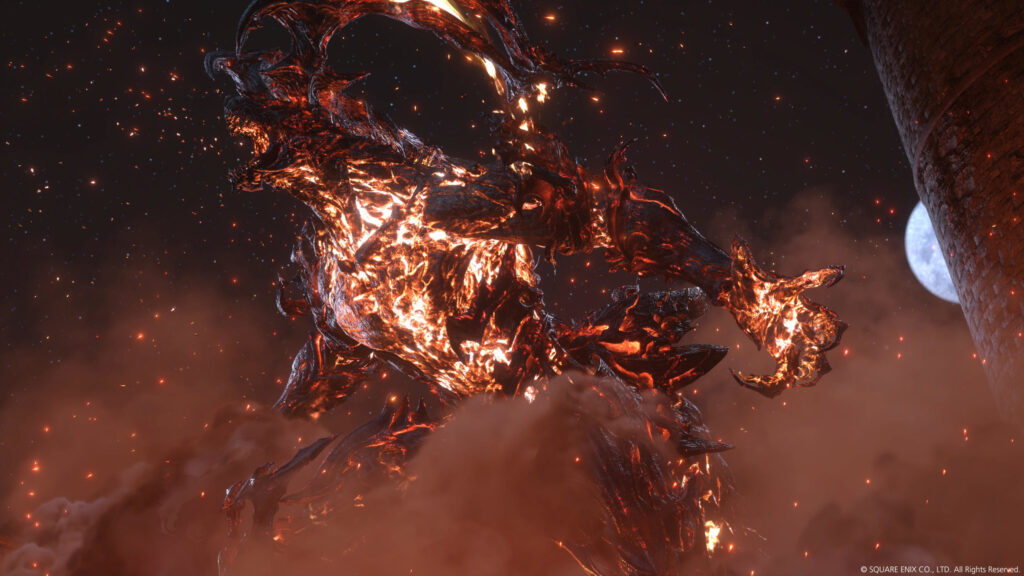
The Things I Liked
The Story.
For the first time ever in my entire history of playing Final Fantasy games, I actually understood the storyline. This is unprecedented. I have always found the story in most Square-Enix games to be unnecessarily complicated and chaotic, which never made sense to me considering teenagers are part of the target audience. Maybe this is one of those things where Japanese youth are just more mature than us in their thinking? But undoubtedly since FFXV, the developers have been steering the mainline games into a more Westernized direction. The biggest difference I observed were the character names: Clive, Joshua, Jill, Byron, Dion, Wade, Martha, Isabelle, etc… There are many fans out there that hate this; I’m not one of them. There’s just something about relatability that makes me feel more drawn in. This was the first plot that I felt was well-explained and where the story taught a bigger moral lesson to the audience. Even at times when I felt a little lost for details, I was able to reference the Active Time Lore (something like the game’s own Amazon X-Ray feature) to see character, location, and situational excerpts. As the game progressed, more ways to unravel story elements became available, such as visiting Harpocrates to dive into prior experiences and deeper history. Vivian also came into play in the second half of the game, providing a greater look at the politics and relationship complexities for every character and geographical region. All of this is to say there was no shortage of ways to fully understand the story being told. As for the caliber of the story itself, I found it very telling of the real world we live in today. In Valisthea, people with the most magic held strength and power, much like in our world where money is power. Similarly, no amount was ever enough for the greedy rulers of the lands, which led to wars over ownership of the Mothercrystals and Dominants. Enter Cid, a radical rebel who wanted to rid the world of inequality and unfairness. In teaming up with Clive, they were able to slowly reshape the chaos of the world by targeting the richest resources, the Mothercrystals and the magic they created. In our world, bringing down banks would probably be the equivalent. There was also a plague ravishing Valisthea’s lands known as the Blight, which one could say is like our climate change crisis. One of the biggest goals you achieved in the game was ridding the world of the Mothercrystals, which sucked Aether out of the land. The final remarks of the game’s biggest villain, Ultima, suggested that even by stopping the Blight, the world would not heal from the damage already done. I suppose even if we lowered our emissions and reduced greenhouse gases, we’d still be screwed on Earth. However, any efforts we make would prolong our lifetime on the planet. Towards the end of the game, it was revealed that humans were created to toil the land and create benefits for the Gods, but nothing more. They were an expendable resource that would reach expiry once enough magic was gathered, and the perfect human vessel came into being to embody God (Ultima). Ultima would use all the magic in the world to cast a spell capable of reviving the Gods, then merge them all into one ultimate body: Clive/Ifrit, known to them as Mythos. This plan got derailed by an unexpected occurrence: the development of human willpower. Clive, his friends, and the many people of Valisthea wanted to live and were ready to fight the Gods for the chance to survive. In the end, Clive succeeded in banishing the powerful overlord, exterminating magic, preventing the spread of the Blight, and thus ensuring survival of all humans and Valisthea. The overwhelming takeaway for me is that humans are resilient and can overcome any challenge. We need to be courageous enough to stand up to monarchies, governments, and the wealthy leaders in power. But we can’t do it alone and need to forge bonds with the friends we meet along the way. If we rely on each other and care for the world we live in, we can band together and accomplish anything, even something as crazy as taking on a God. There is no uncomplicated way out and we will suffer great losing battles in our life. Poverty, racism, wars, illness, and death. We will have the face the consequences of our actions till date, such as the damage we’ve already done to the world and the absence of amazing people who died for our happiness. Yet, it’s never too late to do better and correct wrongs. While we can’t bring back what was lost, we can create a brighter future by using our willpower to survive and thrive. But the only way to do that is to become united as humans with one goal and true compassion for each other. This was the best story I’ve experienced in Final Fantasy to date. While all other main games have also focused on ‘end of the world’ scenarios, I always found them confusing, too technical, and largely unrelatable. I never felt like I could explain the story to a stranger and make it seem interesting, but this time I felt like it hit home. It may not be a happy story, as most of them never are, but it was a great one.
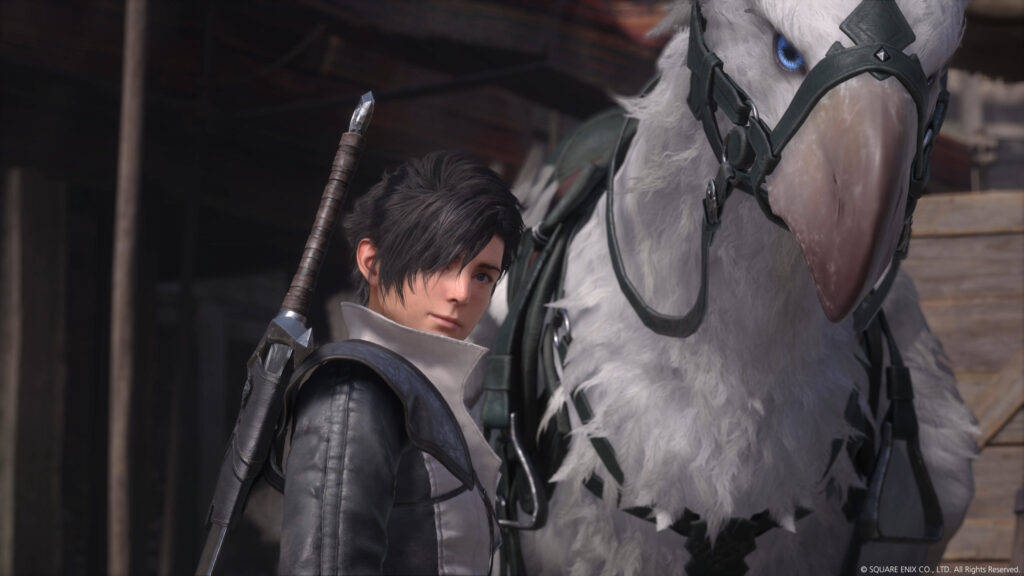
The Cinematics.
Obviously, each time a new game is released, it will inevitably look better than the last because of the way technology progresses. XVI was absolutely a next generation game and it was best suited for the PS5. While I wouldn’t say the graphics were better than Horizon Forbidden West or God of War Ragnarök, it was the background work that set this game apart for me. Talk about beautiful scenery, nature, landscapes, monuments, etc… There were times when I stopped playing and just panned around to see all of the details. Videogames have come so far. While the characters didn’t look as life-like as we’ve seen in other games of late, the choice to make English the original language of the game made all the difference for me. The movements and motions didn’t seem dramatically Asian-happy girl-like as we’ve seen better (Yuffie, Aerith, Vanille), and I thank the heavens. Instead, the seriousness of the game was conveyed well through the acting, which added to the cinematic experience. As with any RPG, there were plenty of cutscenes in both the main game and side quests, so it felt like playing through a movie (if you like that kind of thing). Thankfully, there were options to skip scenes or skip dialogue if I felt impatient. From a gameplay perspective, everything required in cinematics and boss battles were rendered perfectly on time and in great detail. Some of the fights were so incredibly detailed and grandiose, I was surprised my PS5 didn’t blow up. Truly it was an experience like no other. Users have the option to prioritize graphics or frame rate, so I went with graphics and was not disappointed. The complexity of the Eikons and their attacks was really what made this Final Fantasy unique beyond words. Attacks like Meteor and Ultima have always been impressive showstoppers for the series, but with modern technology in place, every pixel is now flawless. It makes me wonder what the next game will bring to our eyes.
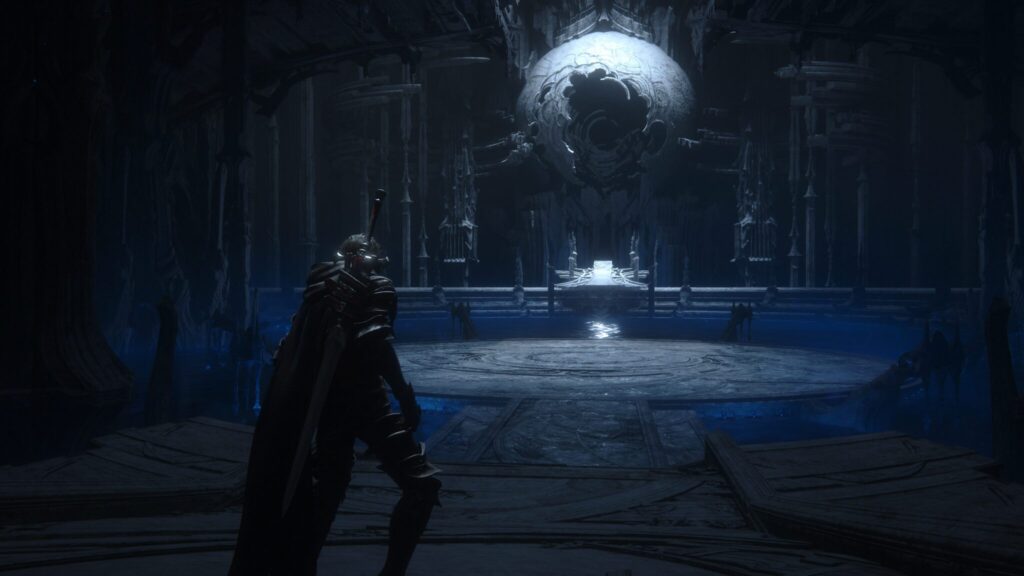
The Attractive Characters.
It’s not to say prior Final Fantasy games didn’t have hot characters, but this game was on one, especially with the men. It was the very first thing I noticed. Clive got more attractive as the game progressed, and thanks to some risqué scenes (that we’ll discuss later), you got to see a lot of things. His hair grew messier, but that beard worked for him. Joshua grew up to be attractive too, but neither brother could match their father, Elwin. Now that was a daddy. Speaking of daddies, enter Cid. I don’t know where to begin, but I must say the choice of voice actor took it to the next level. I’ve never heard a voice like that, and it sent shivers down my spine. Cid was the ultimate desirable man, and you could tell many of the other characters felt it. His impact was not just because of his personality; I wanted to hear him speak because I couldn’t take my eyes or ears off him. Some of the characters you got to know through side quests were incredibly sexy too. My list: Theodore, L’ubor, Aevis, Biast, and Cole. Honorable mentions to Gav and Otto who could get it too. Barnabas was a mixed bag for me. On one hand, he was also daddy. On the other hand, he was insane, and you could see it in the eyes and hear it in his voice. There were times when I felt reeled in, and times when I just said no because of his role in the game. If he ended up being redeemed in the end, I might have moved him up on the scale. As for the women, Jill was absolutely stunning. She looks like a combination of Yuna and Tifa, which surprisingly resulted in an incredibly beautiful result. I always felt Yuna was a basic beauty and Tifa was beyond sexy, so it was ironic seeing that Jill was like a perfect balance of simplistic beauty and major sex appeal. Despite Isabelle being the official main whore of the game, Benedikta took the crown for me. We know she slept with at least three major characters, and her evil ways made her seem unattractive to me (much like with Barnabas). Beyond her I suppose you could turn eyes at Mid, Martha, Tarja, hell even Vivian, but y’all know that ain’t my way. As shallow as this is, we all know we pay more attention to shows where the eye candy supply is prime. Why would it be any different for a videogame? But I must say, they went the extra mile with the males of the game. I wonder why?
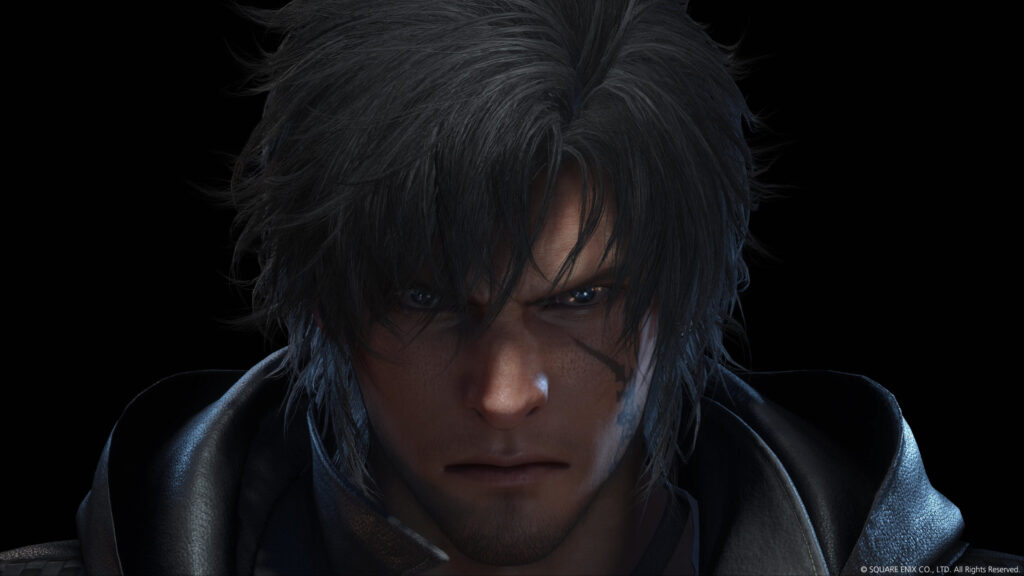
The Romance.
Romance in Final Fantasy has always been a tricky topic. Firstly, the majority of them have been tragic. Some seemed forbidden, and others just unexplored. It was hard to imagine there would be any romantic plot in FFXVI when the game began because there was just so much doom and gloom. To my surprise, Clive falling in love with Jill was something unexpected, but very welcome. I was a huge fan of Jill in this game and could immediately see how caring she was to all around her. The chemistry between her and Clive was immense, and the game had so many moments where they were just about to become intimate, but never got the chance. My fear was that this love would never become a real thing, but I was shocked when they finally made love. As much as I didn’t find the sex scene tasteful (more on that below), this was the furthest any Final Fantasy took romance. I appreciated their final side quest together and how solid their relationship ended up becoming. Alas, everything ended in tragedy as per usual. In Clive’s final attempt to save their world, they became separated, and it is unknown if both lived well beyond the game’s ending and found their way back to each other. I guess I should take this opportunity to make honorable mention to the other love stories in the game, if you want to call them that. It seemed like Kupka really did love Benedikta, though whether the feeling was mutual is another story. The other big one that stood out was between Dion and Terence, notably because of their secret gay relationship. I will say that in a day and age of pushing agendas too much, it did not feel overdone, and it was nice to see the change of pace. Overall, I have a new FF couple to love and cherish: Clive x Jill.
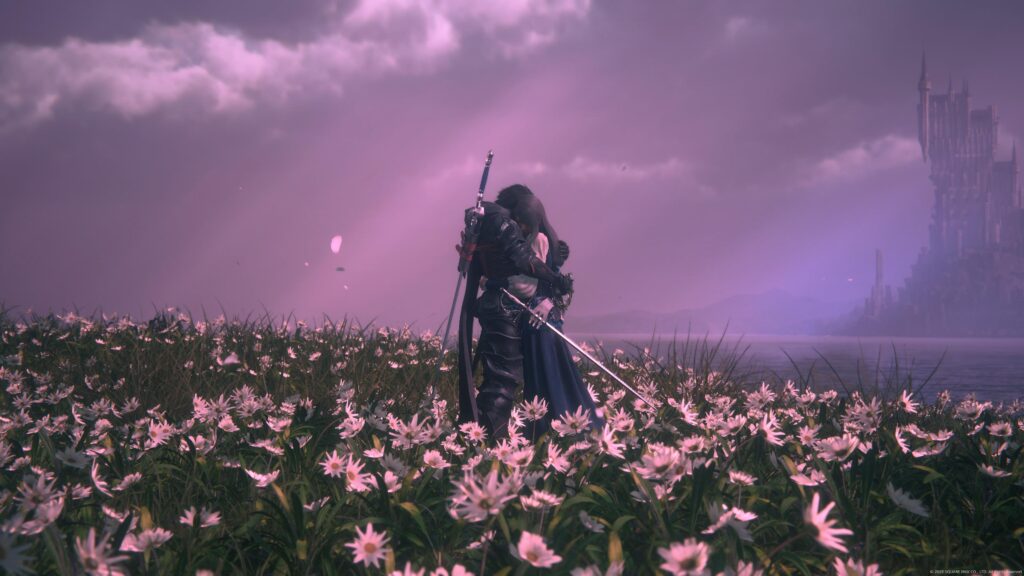
The Eikons.
Hands-down, summons have always been an exciting part of Final Fantasy lore. There is no exception to that here in XVI. The game features 8 main Eikons: Phoenix, Garuda, Ramuh, Titan, Bahamut, Shiva, Odin, and newly born Ifrit. Each Eikon draws from a unique element, such as Aero, Thunder, Blizzard, etc…, with Ifrit being an exception as a second Fire Eikon. As such, for the first time ever players are able to play as an Eikon in combat. Would you have believed that could be possible back in the days of FFX? And fighting as an Eikon was absolutely one of the best parts of the game. Why? Because you were tasked with fighting other Eikons. That’s right, literally beast wars. We’d only previously seen scenarios where the player would fight as is against the legendary monsters, but FFXVI allows you to transform into a fellow gargantuan creature. Mind you, this was only possible during major boss bottles against similar-sized creatures (and I say that loosely given we had to fight Titan Lost). Square-Enix wins some points for coming up with the idea of Dominants, a unique and new way to ‘summon’ the Eikons. It would have been amazing to fully play as all of the Eikons, but the whispers I’ve heard on social media seem to hint at the hope that a DLC could bring that dream to life. For now, I’ll settle for Eikon Abilities, otherwise known as the primary magic spellcasting in this game. Read on!

The Magic.
One of the big adjustments fans had you get used to in FFXVI was the absence of magic spells. We’d all grown accustomed to our Firagas and Blizzaras over the years, with Curaga being a necessary favourite of mine. Alas, none of that exists here (not quite). Magic in this game was granted through the power of Eikon abilities, and with Clive having Phoenix powers in his lineage, he was able to cast Fire. The wonderful thing about our main protagonist was his talent for absorbing the abilities of every Eikon in the game. This meant that upon slaying Garuda, he was able to cast Aero if he called on her abilities. Ramuh brought Thunder, Titan brought Stone, Bahamut brought Light, etc… The reason I list this as a positive is because I did not miss MP (magic points) at all. There was no cost to use Eikon abilities except a cooldown period, which meant less items to buy (Ethers and Elixers) and no scenarios where the player could run out of magic mid-battle. Some players would argue this made the game too easy, but to those players I would say there are multiple difficulty settings to play on, and always the choice of using just physical attacks. Let the rest of us enjoy this win!
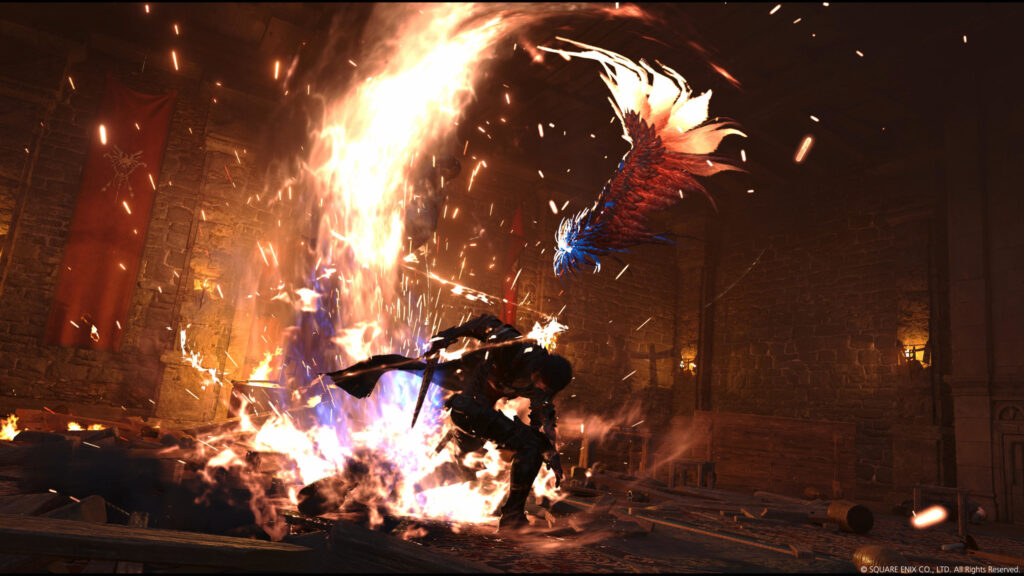
The Music.
I loved the soundtrack for this game. It was simple. I find with bigger games like this, the soundtrack can be very lengthy and sporadic. What I mean is, with more tracks there are more opportunities to hate certain pieces. And when certain pieces loop forever as long as you’re in a certain area, it can grow annoying. The soundtrack in FFXVI seemed to feature a smaller selection of music pieces. Normally in Final Fantasy, each unique location has its own theme, but this game kept things consistent with the same tracks used in similar areas. You also may know I’m an audiophile, so I download and listen to all these soundtracks. Let’s be real… On a 4-disc soundtrack, I’m going to skip several tracks. I didn’t find any pieces that I hated in this game. Everything sounded calm, or epic, or emotional when needed. Some of the themes, like Cid’s theme, grew to be iconic very quickly. What really took me with one particular piece of music (used repeatedly for the Eikon battles) was when it would suddenly transition from ‘fight for your life’ to ’emotional meadow’. If you played the game, you’ll know exactly what I’m referring to. It’s quite odd to have a peaceful ballad start playing during a boss fight, but it really worked for this game. For the ending credits, one Japanese song was kept intact. I thought this was interesting given that everything else in the game was so westernized intentionally. Were they trying to create another Suteki Da Ne? If they were, it didn’t work for me. But aside from that, I’m super excited for the soundtrack to release for the game because there’s definitely a few melodies I can’t get out of my head.
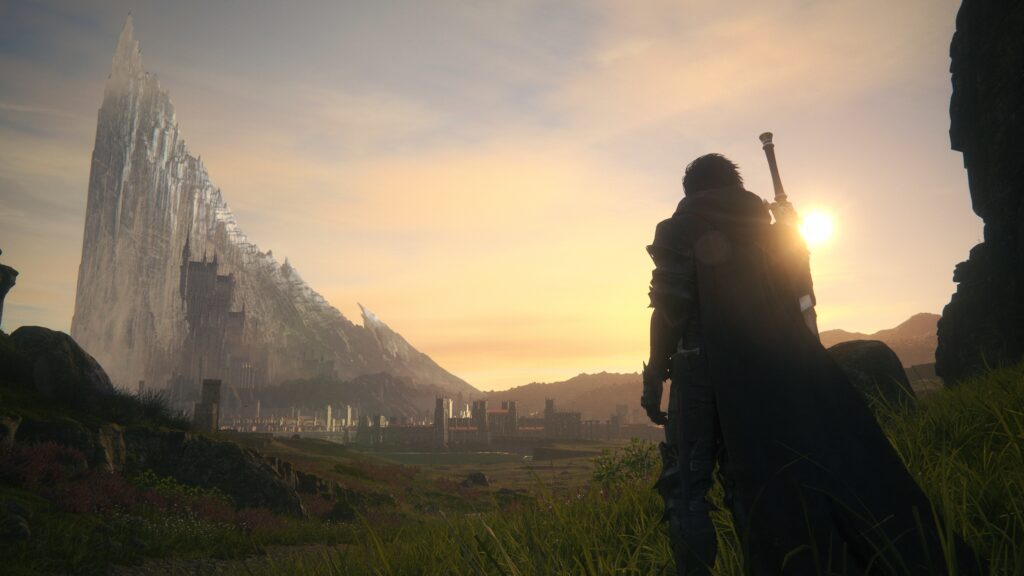
Things I Questioned
The Lack of Happiness.
Although I thought the story in FFXVI was amongst the better ones, it was still a very dark and depressing tale. From the moment the game began, wars and deaths were a common theme, and it really didn’t let up all the way to the ending. So far when people asked me what I thought about the game, I responded with, “it feels like Final Fantasy meets Game of Thrones.” And if you know me, I abhorrently hated GOT. Not only was there a general lack of happiness in the game, but there were some extreme death elements. People getting crushed by boulders, being strung up to die, ending up beheaded, and the list goes on. Characters died in this game like nobody’s business. What I really would have liked to see was more solid memories for the main characters. The period of the game that took place during Clive and Joshua’s youth was noticeably short, including the time King Elwin was alive. When looking back on the deaths the took place as a result of the events at Phoenix Gate, it was difficult to feel sad because there was such a lack of relationship building. Had there been more time spent on frivolous things that caused Clive to bond with young Joshua, young Jill, young Torgal and both of his parents, there might have been a bigger impact on the overall emotional feel of the story. There were so many side quests that were enormously stupid, so I wonder why some of those couldn’t take place in the earlier part of the game and focus on the inner characters. Additionally, I don’t think there was any scene where Clive truly laughed. There were no funny or light-hearted moments between him and Jill. Even Yuna and Tidus had fun on the pilgrimage. We all know I’m a very emotional viewer, but I wasn’t driven to the verge of tears much during this game. I blame that on the lack of character development outside of the main drama. When Joshua finally came back into Clive’s life, how come they never spent personal time together? Sure, the world was in peril, but where was all the brotherly love? The biggest letdown for me was not seeing more love given to Torgal. Considering Torgal meant so much to Jill in their youth, she had no reaction at all to seeing him again as an adult. Joshua treated Torgal like some random family member you see at a reunion years later. During one of the side quests where it was mentioned that Torgal missed Cid, I asked, “why?” I genuinely didn’t get it, cause the game glossed over those scenes where they would have spent time together. Instead of time being wasted on random villagers getting lost a few feet away from the safe zone, those side quests could have focused far more on the bigger bonds in the game. Towards the end, side quests were given a lot more depth and each character had their own one, but I would have preferred to see the buildup earlier on. Instead, despite the length of the game, it was a very linear story that was tragic through and through. All work and no play.
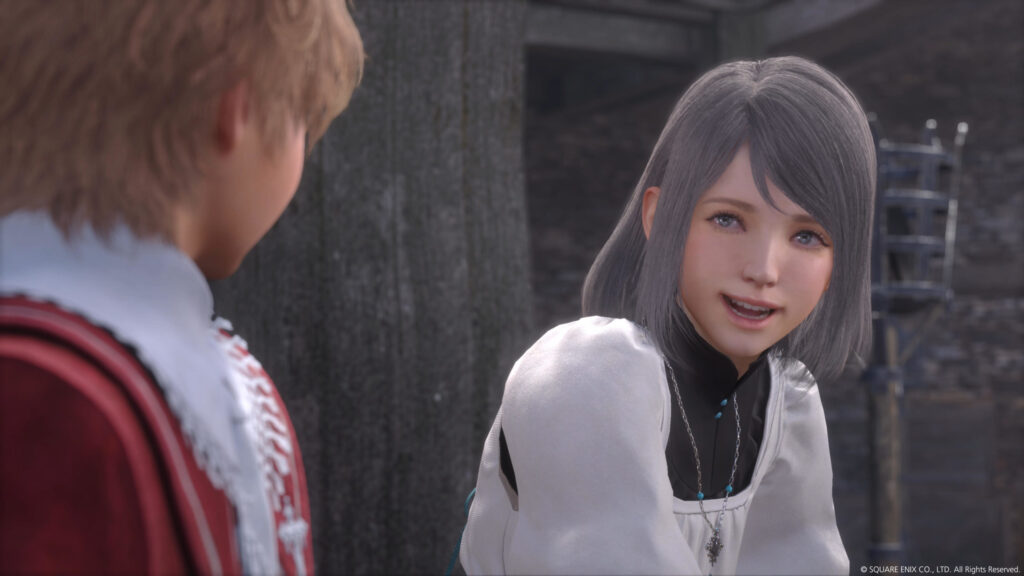
The Amount of Death.
As mentioned above, death was a grand theme in FFXVI, and I was not a fan. Any character, big or small, could die randomly at any point, and they did! There were some big pivotal deaths in the game, and we all know Cid comes to mind. WHY? Can someone answer that? What was the significance of this enigma of a man dying so early in the game? Was it absolutely necessary for Clive to take on his persona in order for the story to progress? I can’t fathom any reason, other than it being a driving factor for the characters to push on. Even still, wouldn’t they have all stayed motivated with Cid alive and leading them? No, I’m not going to let this one go Square-Enix. With Cid aside, there were still many side characters who suffered random deaths, like the Murdoch family. Both characters were good people, both dying at the hands of external circumstances. The one that completely broke my heart was Theodore. First of all, my type, so I was already invested, but it was a prime example of how expendable characters were in this game and how cruel life on Valisthea was. Why did he, a hopeful non-villain, have to die? What did his death do to help his sister? Much like with Cid, everyone else would still have moved on with life, so what was the point? There were only two deaths I enjoyed. One was the extremely racist guy around Moore. He was part of a side quest where he hunted Bearers for sport with his young son. They both got dragged off and killed pretty quickly. The other death was Anabella’s. What I didn’t like was that she had the option of killing herself. She should have been taken out by someone or something else for all the terrible things she did. More or less, all the Dominants in the game died. While Jill survived and probably Clive too, the curse would take them out eventually. So, in retrospect, every main and important character dies in this game. Happy ending much?
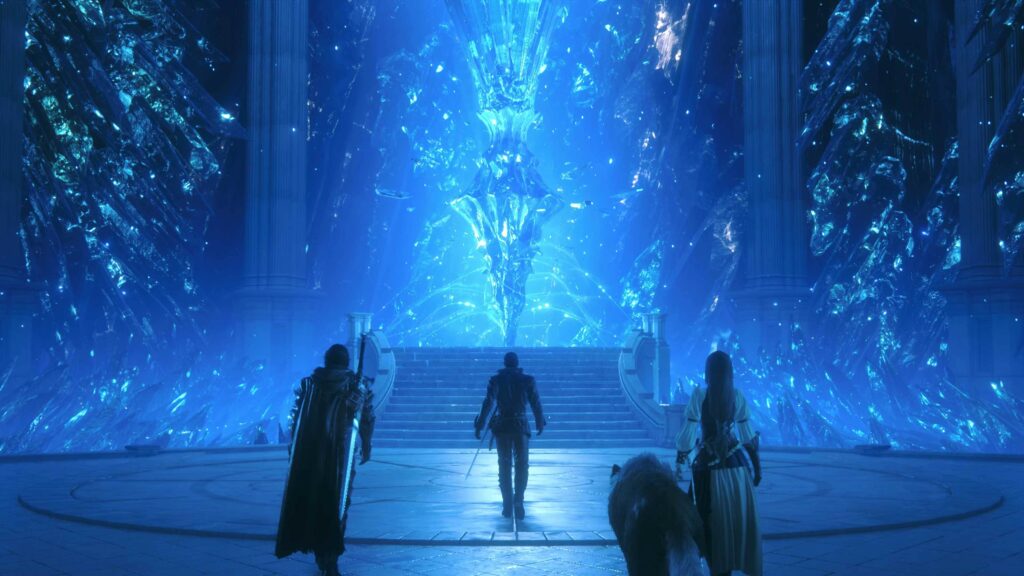
The Sex and the Swearing.
Now here is why I felt this was a Game of Thrones x Final Fantasy collaboration. Aside from all the depression and death, there was also a lot of nudity, sex, and f-bombs. What on Earth?! This is NOT the Final Fantasy I grew up with. I recently learned the term ARPG, a combination of Action and Role-Playing Game. I think this is code for American Role-Playing Game. Is that what this was? As much as I loved seeing some of the skin I saw, I also wondered what any of it did for the story (much like I wondered in Game of Thrones). Did we really need to see Benedikta bed every man in the game? Was Jill and Clive’s nude scene romantic or just odd? I loved that they got together and shared intimacy, but we can all reflect on the beauty of how it was done in Final Fantasy X. There was no nudity, but pure love and affection. This was not a game I could play with my family in the background.
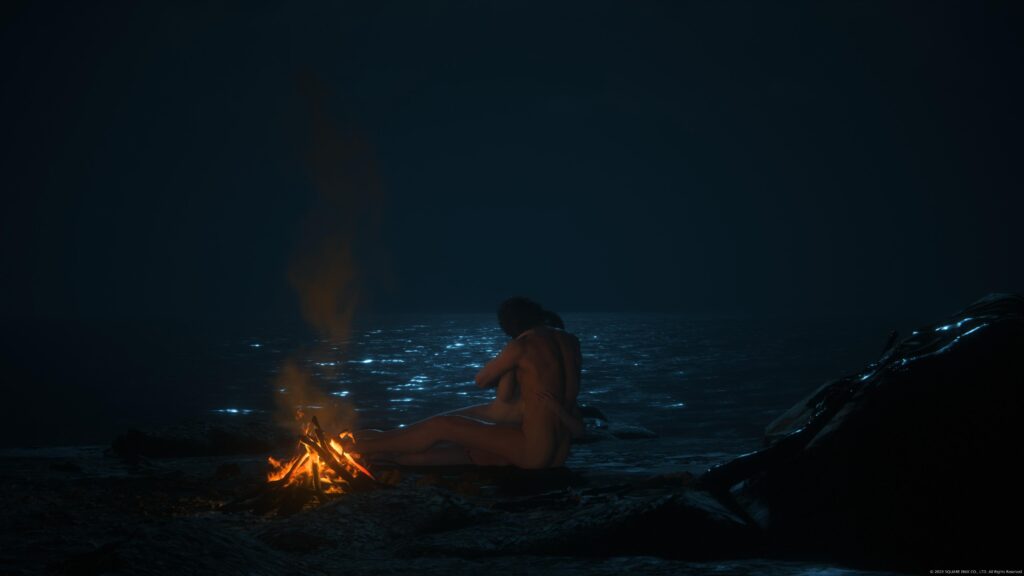
The Depth of Side Content.
Most modern big-budget games are known to have plenty of side missions and optional plots to follow. Avid gamers know that completing side missions usually goes a long way in helping to complete the main story because of the leveling and experience opportunities. FFXVI is no exception here; thanks to the side quests, I ended off the game at level 49 (which I think was fairly good). However, one thing for sure is that most of the side quests lacked any real depth. To elaborate, the side quests were repetitive and super simple for a good chunk of the game. Things like carrying objects to another room or picking up a dropped item from an area with mediocre monsters. A lot of the story points seemed really boring and I found myself skipping the dialogue a lot to make quick work of the tasks at hand. Admittedly, as the game progressed, the side quests did improve in complexity and story. Some of them ended up being really telling, which made me think that they should have been a part of the main game. For example, it is through the side quests that you first learn of Cid’s daughter. Sure, you meet her in the later game anyway, but it’s less of a random shock when you know she exists. Some of the side quests also triggered some substantial changes in certain regions, which made me wonder how it was possible to finish the game without some of those events. I also wondered how not completing the side quests would change the final farewell scene at the Hideaway when all of Clive’s friends and supporters showed up (considering those bonds were mostly built during the side quests). The hunts were a nice addition kept in place considering a lot of other Final Fantasy elements were stripped away as mentioned above. My last point to make is that I felt like there weren’t enough side quests. A lot of them suddenly cropped up towards the endgame, but I found myself wanting more. Perhaps because I didn’t want my FFXVI experience to end. In a world where free games like Genshin have better abundance and quality of challenges, it would have been nice to see more.
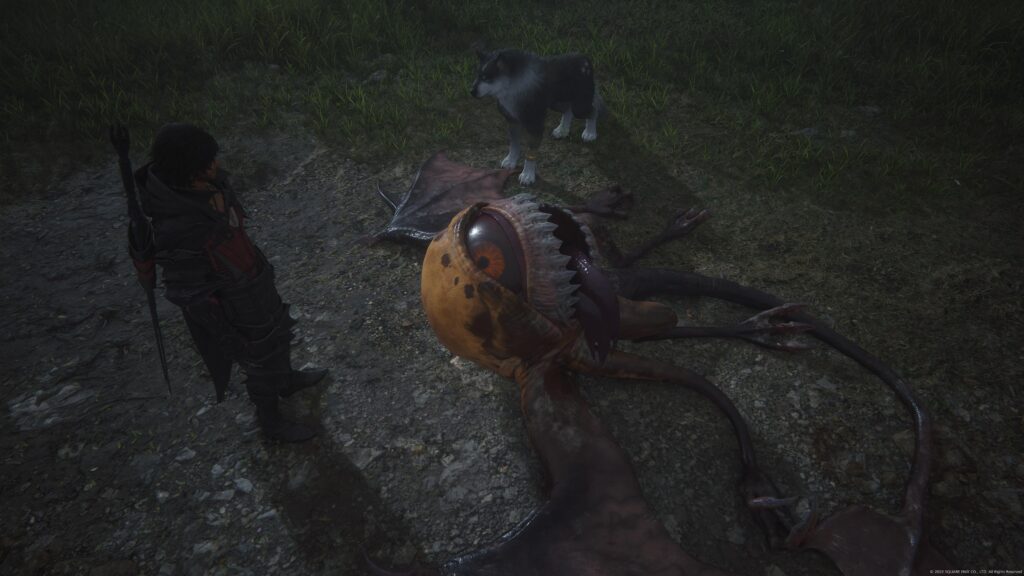
The Graphical Integrity.
While I did praise the cinematics above, I found that the graphics fell short at some points, especially with character renders. For a game of this generation, it was surprising to see that characters sometimes weren’t firmly planted on the ground and would do a full-body rotation to turn and leave the room. This is something I expect from a free multi-platform game like Genshin Impact. During dialogue, some characters’ eyes would move as if they were reading off a teleprompter instead of making eye contact with the person in front of them. I’m looking at you Vivian. There were scenes where objects would be interlaced, or characters would slide away (like when Clive walks into Torgal). At the end of combat scenes, Clive would be able to walk through defeated monsters (see below). Even with Graphics mode enabled, these were the imperfections that appeared throughout the game. You might be thinking I’m really picky, but the fact is that other games have set the bar high for what the PS5 is capable of rendering. There just wasn’t enough balance between the pristine backgrounds and the passable character graphics. Perhaps those backgrounds looked so good because they were so far away?
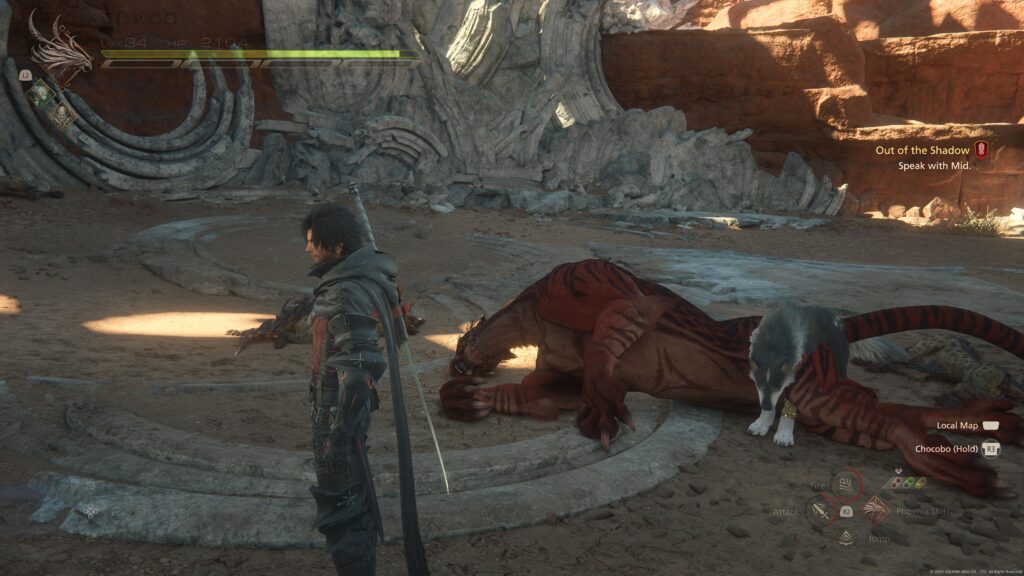
The Missing Mini-map.
I absolutely, utterly, and supremely hated that there was no mini-map in this game. In fact, I should have moved this up to be my number one gripe. What in the hell? Listen, I love to explore and cover a lot of ground in videogames, and FFXVI had many places to traverse and take in. While the game utilized waypoint markers to help players find their way, it was often hard to tell if an obstruction would lie directly ahead of the final destination or not. A lot of areas had winding paths or long roundabouts that weren’t obvious by just looking ahead, so I always pulled up the full map from the menu. To make matters worse, certain one-time locations and dungeons just had no map altogether. My guess is that the developers felt those areas were straightforward to navigate, but for someone like me who likes to hunt for every treasure and discover every single thing, it was anxiety-inducing. There were times when multiple bends in the road would appear, and I was afraid that I’d end up in a random boss battle that was meant for later in the game or something. Now, players did have the option of using Torgal’s senses to know precisely which way to go in those locations, but what if you wanted to explore all the optional paths. Does anyone remember that one treasure sphere in Bevelle when Yuna was supposed to get married to Seymour? It was one of those things where you just HAD TO KNOW to backtrack in the heat of all the drama and collect it or else, you’d never get it again. Considering Final Fantasy has spent years teaching me that you can miss out on important things in the blink of an eye, was it so much to just give us full maps and the damn mini-map?
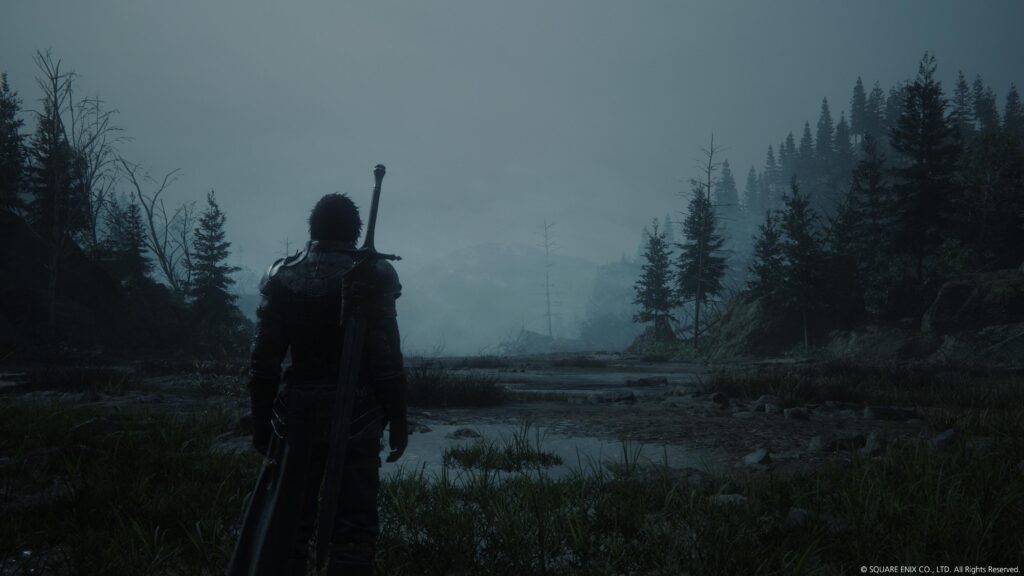
The Clear as day Lack of Diversity.
Listen, I’m just gonna say it: where were all the black people? Nowhere, that’s what. What is super interesting to me is that because the game is so westernized, the characters don’t look Japanese per say. They clearly were made to look like white people. Okay fine, but everyone in Valisthea was white??? I was waiting patiently to see if things would change as the game progressed, and all I can state is that there was SOME colour in Dalimil, but I had to squint to notice it. Some might argue that because the game took place during medieval times, diversity was not quite a thing. But this is a series full of Moogles and magic! With Valisthea being 100% fictional, I found it hard to fathom the reason for such a blatant disregard for coloured representation. If the developers somehow managed to insert homosexual characters into the game, I find it odd that racial diversity was a challenge. Despite what we know of Asian cultures being less than tolerant of outsiders, this game was jointly made with the help of many worldwide Square-Enix divisions. Above all, it was prepared for an international debut and audience. How did no one call this out? Just one of those things to ponder.
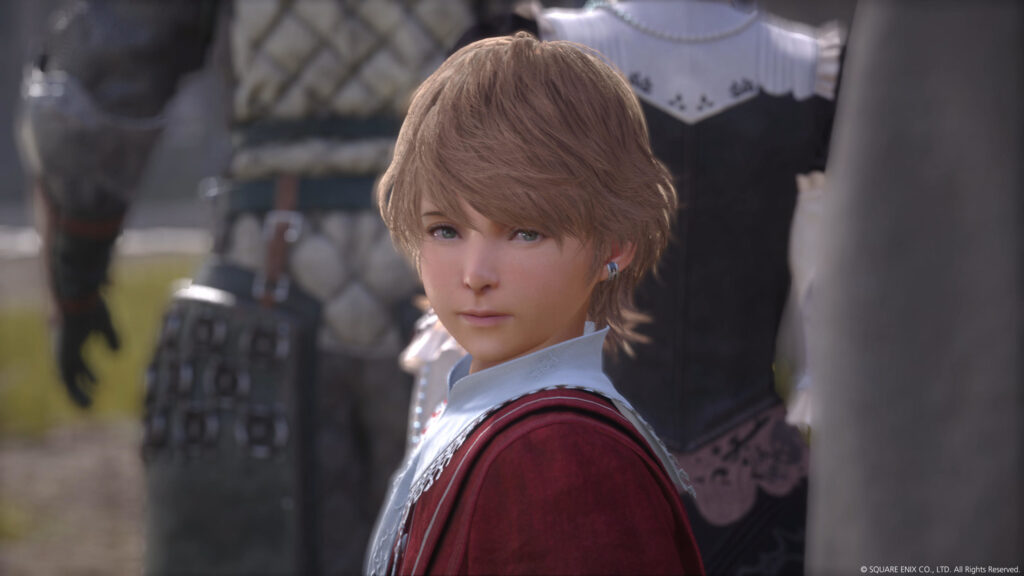
The Ending.
It wouldn’t be Final Fantasy without a dystopian and hollow ending. While I covered off most of the story points already above, there were two concluding thoughts I had about the way the game ended. One, I found it very unlikely that Clive (or any human) could kill a God. The steps it took to get rid of Ultima were no small feat, but how does one fully murder their divine creator? Ultima provided all magic and created the Eikons, so he was elite unbeatable if you ask me. Theoretically if all the Eikons remained alive and banded together with their full abilities, I think it would have been a more believable defeat. Obviously, that couldn’t happen as Clive (the player) had to have some way to use all of their powers and some of the Dominants just had to die. We were supposed to believe that Clive was the ultimate vessel for Ultima’s undoing, but possibly it may have been better for the final part of the game to drag out more. I also wonder if part of the reason I found it to be too convenient an ending was because of the game’s general lack of emotion throughout. If there was more feeling, like how FFX ended, maybe the impact would have been more resounding. On the other hand, the fact that Ultima and his people came to an existing world they found, Valisthea, tells me that despite his Godly power, he was not the ultimate creator of the universe. Planets in this particular universe came into formation by some other divine power that we never truly learned about. If I look at it that way, I could see Ultima being a beatable enemy. I’m curious what others thought about this. My second thought was how much it sucked that we didn’t get a truly happy conclusion for Clive and Jill. Even them aside, what really becomes of everyone in the game? There are some theories that Jill realizes Clive may in fact be alive, but does she go to find him? Does she make it in time, or do they both just succumb to the curse? Why couldn’t we see them live out their final days at least? Or get some indication that some one of the central characters thrives. A final unanswered question comes after the game’s lengthy ending credits, where we were shown a distant future without magic. The final scene revealed a book written by Joshua Rosfield entitled ‘Final Fantasy’. That was chilling to me because it was such a full-circle moment. Though, it had me wondering so much about how that book came to be. Did Joshua pen it throughout the game? Did he live after Clive healed his body at Origin? Did the Undying assemble the book and name it in his honor after his death? Or was it Clive that wrote the book? Afterall, if the book was a metaphor for the entire game, then it would make sense that Clive was the only playable character since it consists of solely his memories. I think it’s safe to say there are a lot of questions we’ll never receive answers to, which is a bit frustrating. Story writers create cliffhangers to give you a reason to come back, but FFXVI seemed complete and finished by the end. Except for a possible DLC, I don’t think there was much of a necessity to create these gaps, so I would be lying if I said I didn’t feel a little incomplete.
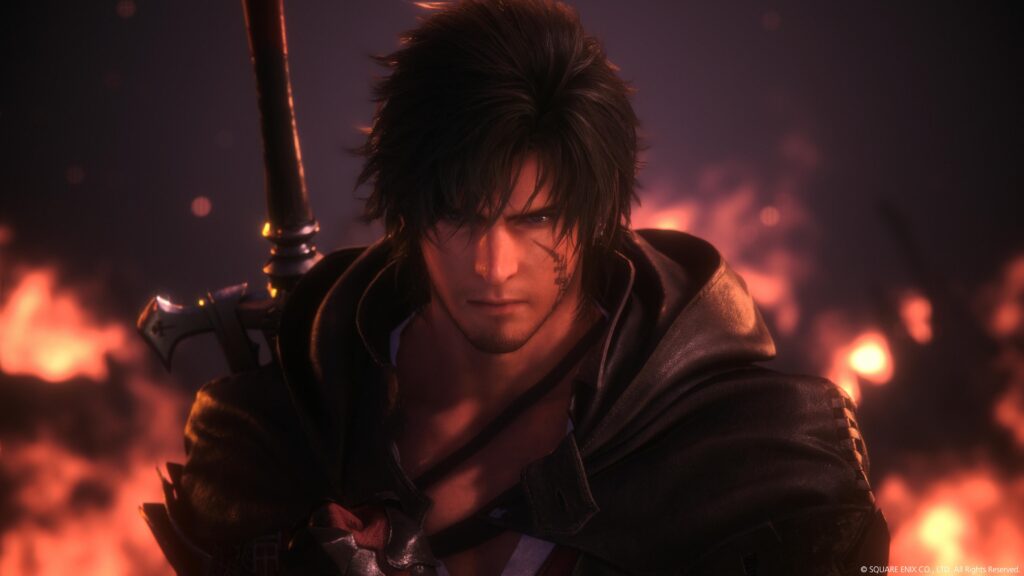
I realize I wrote a lot, but would it surprise you to know that I feel like I glossed over many things? Although it is clear I wanted more out of this game, it was still packed with so much content and was one of the best games I ever played. If you need my bottom line, it’s this: Final Fantasy XVI was worth every penny. Whether you’re a long-time fan of the series, or brand-new to the series, FFXVI is filled with action, combat, and plenty of story. There is a lot of hate for this game circulating online because of the many changes made to the fabric of the series this time, but trailers and gossip can only paint so much of a picture. While, yes, this is a vastly different Final Fantasy, it isn’t wrong or broken. Start with the demo and go from there! Otherwise, I’ll see you all come DLC-time (if we’re that lucky). Happy gaming!
ARTICLE ARTWORK
“Final Fantasy XVI” PlayStation, www.playstation.com/pt-pt/games/final-fantasy-xvi.
“Final Fantasy 16 Gets an Absolutely Gorgeous Game Informer Cover” Push Square, www.pushsquare.com/news/2023/05/final-fantasy-16-gets-an-absolutely-gorgeous-game-informer-cover.
“Final Fantasy XVI Announced” RPGamer, www.rpgamer.com/2020/09/final-fantasy-xvi-announced.
“Final Fantasy XVI – Batalhas entre Eikons Serão o Coração do Jogo” NPC Games, www.npcgames.com.br/final-fantasy-xvi-batalhas-eikons-coracao-jogo.
“Final Fantasy 16 verrät haufenweise neue Details zur Welt und ihren Bewohnern” Wöchentlich, www.wochentlich.de/wissenschaft-technik/final-fantasy-16-verrat-haufenweise-neue-details-zur-welt-und-ihren-bewohnern.
“„Przykład prawdziwego nextgena”: dziennikarze podzielili się swoimi pierwszymi wrażeniami z Final Fantasy XVI na PlayStation 5” Innowacja Polska, www.innowacjapolska.pl/przyklad-prawdziwego-nextgena-dziennikarze-podzielili-sie-swoimi-pierwszymi-wrazeniami-z-final-fantasy-xvi-na-playstation-5.
“Final Fantasy XVI official screenshots” Resetera, www.resetera.com/threads/final-fantasy-xvi-official-screenshots.590628.
VIDEO CLIPS
Takai, Hiroshi / Maehiro, Kazutoyo. “Final Fantasy XVI – “Ambition” | PS5 Games” YouTube, uploaded by PlayStation, 20 Oct 2022, www.youtube.com/watch?v=ih0fVVtmiB4&ab. Accessed 09 Jul 2023.
Takai, Hiroshi / Maehiro, Kazutoyo. “Final Fantasy XVI – Revenge Trailer | PS5 Games” YouTube, uploaded by PlayStation, 09 Dec 2022, www.youtube.com/watch?v=wvunu2e29tc&ab. Accessed 09 Jul 2023.
Takai, Hiroshi / Maehiro, Kazutoyo. “Final Fantasy XVI – ‘Salvation’ Launch Trailer | PS5 Games” YouTube, uploaded by PlayStation, 24 May 2023, www.youtube.com/watch?v=aPT26Dd3OzE&ab. Accessed 09 Jul 2023.
Takai, Hiroshi / Maehiro, Kazutoyo. “FINAL FANTASY XVI – Ascension Trailer” YouTube, uploaded by FinalFantasy, 11 Jun 2023, www.youtube.com/watch?v=iaJ4VVFGIa8&ab. Accessed 09 Jul 2023.

